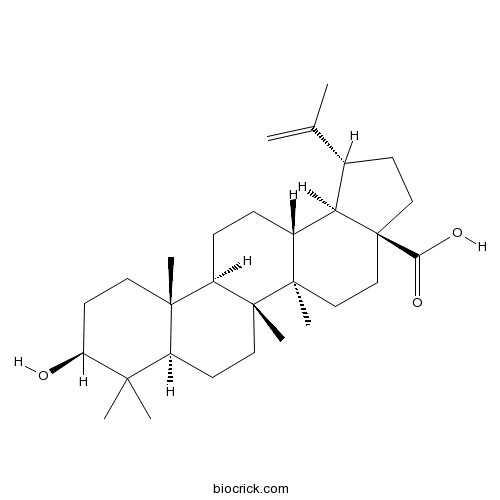Sambucus adnata
Sambucus adnata
1. The products in our compound library are selected from thousands of unique natural products; 2. It has the characteristics of diverse structure, diverse sources and wide coverage of activities; 3. Provide information on the activity of products from major journals, patents and research reports around the world, providing theoretical direction and research basis for further research and screening; 4. Free combination according to the type, source, target and disease of natural product; 5. The compound powder is placed in a covered tube and then discharged into a 10 x 10 cryostat; 6. Transport in ice pack or dry ice pack. Please store it at -20 °C as soon as possible after receiving the product, and use it as soon as possible after opening.
Natural products/compounds from Sambucus adnata
- Cat.No. Product Name CAS Number COA
-
BCN5524
Betulinic acid472-15-1
Instructions

-
BCN5616
Oleanolic acid508-02-1
Instructions

[Determination of ursolic acid of Sambucus adnata].[Pubmed: 24010309]
HPLC was used to determine the content of ursolic acid of Sambucus adnata from different origins. The content of ursolic acid range between 1.14 to 5.7 microg, r = 0.999 8, the recovery range from 99.8% to 101.3%. The method is quick, sensitive and repeatable for determination of the content of ursolic acid of S. adnata.
Chemical constituents from Sambucus adnata and their protein-tyrosine phosphatase 1B inhibitory activities.[Pubmed: 22041077]
The MeOH extract from the whole plants of Sambucus adnata has shown significant protein-tyrosine phosphatase 1B (PTP1B) inhibitory activity. Chemical study on the extract resulted in the isolation of thirteen compounds, including a novel triterpene (1). The structure of 1 was determined to be 1α,3β-dihydroxy-urs-12-en-11-one-3-yl palmitate on the basis of extensive spectroscopic analyses. Among the isolated compounds, ursolic acid, oleanolic acid and (±)-boehmenan showed the most potent PTP1B inhibitory activity in vitro with the IC(50) values of 4.1, 14.4 and 43.5 µm, respectively. The kinetic analysis indicated that (±)-boehmenan inhibits PTP1B activity in a competitive manner.
Glycomyces sambucus sp. nov., an endophytic actinomycete isolated from the stem of Sambucus adnata Wall.[Pubmed: 17766861]
An actinomycete, designated strain E71(T), was isolated from the stem of Sambucus adnata Wall, a Chinese medicinal plant, and subjected to a polyphasic taxonomic study. Phylogenetic analyses based on the 16S rRNA gene sequence showed that the organism was a member of the genus Glycomyces, and formed a distinct phyletic line distantly related to recognized species of the genus Glycomyces. Morphological and chemotaxonomic data supported the affiliation of strain E71(T) to the genus Glycomyces. A number of physiological properties and a unique menaquinone profile allowed differentiation of the strain from related Glycomyces species. It is therefore proposed that strain E71(T) represents a novel species of the genus Glycomyces, for which the name Glycomyces sambucus sp. nov. is proposed. The type strain is E71(T) (=CGMCC 4.3147(T)=DSM 45047(T)).
[Studies on chemical constituents of Sambucus adnata].[Pubmed: 17727059]
To study the chemical constituents of Sambucus adnata.


